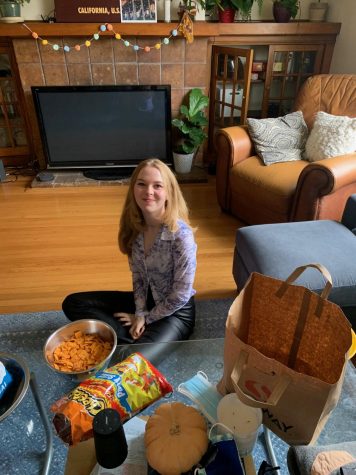How to navigate media consumption in the midst of a fake news epidemic
The pandemic has increased difficulty in finding reliable news sources, make sure what you are reading is trustworthy
In this age of electronic dependency, information bombards us from every angle imprinting the author’s perspective of the story onto the readers. Navigating your way through opinionated and non-factual news sources can be difficult, especially when the written opinions subconsciously become your own. The American epidemic of fake news influences our society in hidden ways, from promoting non-reputable sources for a student’s research paper to swaying elections. This year, Counterpoint’s main mission is “to showcase the diverse range of perspectives in the Castilleja community and distill different experiences and insights into concise, high-quality literary pieces that provoke conversation and change, from within the Circle to beyond. This mission is rooted in our belief in the power of journalism, and we want to encourage student writers and readers to ask thoughtful questions to catalyze progress.” Our mission is to create a culture of knowledge at Castilleja, but, we know Counterpoint will not be your primary source of information; so we want to provide a guide that will help you all maneuver different popular news sources and recognize their “predilections” to kick off the school year.
One very common form of news absorption happens through our TVs. Broadcast journalism has become a staple of many informed households, but popular news channels have innate biases that might taint the authenticity of the event. For example, the right-leaning Fox News is one of the most popular cable news channels in the US today, but when scored by Gallup and the Knight Foundation, where negative figures entail heavy bias and positive numbers indicate less bias, Fox has a bias score of -51, which was the largest amount of bias scored. An average 2.5 million primetime viewers of Fox News excused and commended their practices. Hopping to the opposite side of the political spectrum, MSNBC is popularly known as the “left equivalent” of Fox News. MSNBC is less biased than Fox News, but a score of -37 should not be tolerated, either. Another popular news channel is left-leaning CNN with a bias score of -27. A score of -27 does describe some bias, but less than MSNBC and Fox News. Coming in as the victor of unbiased news channels is PBS News with a positive score of 31. PBS News is the least biased new organization scored by the Knight Foundation which bodes well for its daily TV program: PBS News Hour. If you crave a more retro flavor of broadcast journalism, National Public Radio (NPR) has a positive bias score of 12, meaning they are one of the most unbiased news sources surveyed.
Another common way to consume current events is reading old-fashioned print newspapers. Since newspaper corporations have started migrating to the internet for efficient news sharing, newspaper articles are easily accessible and trusted. But how much should you realistically trust different newspapers? Starting off with a classic, The New York Times is one of the most revered newspapers in America with 3.9 million subscriptions. According to the same Knight Foundation survey, the New York Times has a negative bias score of -11 which details a moderate bias throughout the news corporation in general. Another local favorite newspaper is the San Francisco Chronicle. AllSides reports that the SF Chronicle has a left bias due to their audience being predominantly liberal. With a positive bias score of 10, The Wall Street Journal’s news section is generally unbiased according to the Knight Foundation.
With so many sources and devices that feed Americans news all our waking lives, it’s hard to distinguish trustworthy perspectives from deceitful ones. A great way to ethically navigate America’s partisan maze of information is to read many articles detailing different viewpoints, and to draw your own personal conclusion. One can never be too informed, especially in the catastrophic social and political climate surrounding the election. Counterpoint will always supply our readers with local perspectives to diversify your opinion and add to your range of news consumption.

Ella Holsinger '23 is the Editor of News for Counterpoint. Her favorite boba shop is Pop Tea Bar, and she loves pretzel goldfish. In her free time, she...


